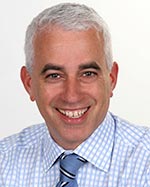
Client advisory boards provide business owners an outside perspective.
Jeffrey Scott cuts right to the chase. “Clients are always analyzing your company,” says the Green Industry consultant. “As the center of your business, they experience the good and the bad of what your company has to offer, and they have already formulated an opinion, whether you know it or not.”
To find out what these opinions are—and to glean a lot of other invaluable information at the same time—some business owners are turning to client advisory boards. Members of a client advisory board are chosen by the business owner to meet together and share their
perspectives about the parts of a company that work, the parts that don’t and the parts that could be improved. The meetings can also be a good opportunity to test new strategies, products, marketing initiatives and services on a captive audience that’s there to give honest, straightforward feedback.
Depending on a business’ goals and resources, client advisory boards can take on a variety of forms. Some meet multiple times a year, some meet only once. Some are formal affairs with many participants and others take place with three or four people over a casual lunch. Scott also describes three different ways to lead client advisory boards—one type is led by a facilitator without the business owner present, another is led by both the facilitator and the business owner, and the third is led by the business owner alone. But despite the structure, there are some key steps to follow to ensure the meeting is an effective use of time that will benefit both the business and the client in the long run.
“A client advisory board is an idea you can execute immediately and have an immediate impact on the bottom line,” says Scott. “You get complete clarity from a sales, marketing and customer service perspective.”

Choosing the right clients
One of the first steps to a successful client advisory board is choosing the right clients to participate. Glenn Bonick, owner of Bonick Landscaping in Dallas, conducted a client advisory board meeting in March. His goal was to generate as much feedback as possible, and Bonick chose six individuals that represented a thorough sampling of his client base to participate. He also made sure to choose clients he had good experiences with in the past to receive constructive criticism rather than complaints.
“You don’t want to get all males or all females, or all people from the same income bracket. A cross-section of customers tends to feed off of each other,” Bonick says. “You also don’t want it to be a bitch session, so you don’t want to bring in clients who are disgruntled. You want people who are generally pleased with the process so they will give honest, helpful feedback.”
Like Bonick, many business owners strive to select a fair representation of their clientele for advisory boards—a mixture of new and old residential and commercial clients who are both men and women of diverse ages. But Scott says an even better approach is to gather the type of customer business owners want more of. By understanding what these ideal clients want and need, the company has a better chance of attracting more of them. Also, these clients typically have more interaction with various departments within the company, so they tend to have more opinions to share.
“You want to target the most comprehensive clients that make you the most money,” Scott says. “The clients who use the most services also see the most mistakes, such as when handoffs within the company don’t work. The client often becomes the victim of that.”
Bonick says his experience with the client advisory board made the good relationships he already had with the participants even better. He plans to host another advisory board in the fall, and continue to host one or two per year with different groups of people each time.
“Since the event, some have called me up just to see how I’m doing,” Bonick says. “That really shocked me that people were that interested in our business and our success.”
Scott agrees it’s a good idea to review the list of participants and consider inviting new clients before each board meeting. Not only will this diversity ensure fresh perspectives, but, as company strategies change over time, so may the ideal client. Depending on the goal of the advisory board, some clients may be a better fit than others at different times.
As for compensation, Scott says it’s not necessary. He suggests holding the advisory board over a nice meal, ideally at a restaurant that’s conveniently accessible by all participants. Holding the meeting over food tends to loosen people up and get them talking, Scott says, and the free meal is the business owner’s way of thanking the clients for their participation.
“It’s in the clients’ interest to be there because they want you to be doing a better job,” Scott says. “If they are not willing to show up or will only come for money, it indicates that you don’t have a great relationship with them and you have a bigger problem.”

Asking the tough questions
Another consideration for a successful client advisory board is asking the right questions to get the most useful feedback. This is when it can come in handy to have a third-party professional moderate the meeting and ask the questions the business owner may not feel comfortable asking. Scott has done this for at least 20 landscape companies and says this is when he often gets the most candid feedback and a true picture of what’s really going on inside the business from the customer’s point of view.
“Asking the right questions means asking the tough questions,” says Scott. “Questions business owners might be embarrassed to hear the answers to.”
Kevin Cryan, president of Cryan Landscape Contractors in Seekonk, Mass., hired Scott to lead a client advisory board in 2012. The information Scott obtained from the group was a “breath of fresh air” for Cryan. It reinforced things he already suspected, while shining a light on issues he never would have known about. For example, he never expected one client, a subcontractor, to say that his favorite thing about Cryan Landscape Contractors is receiving an invoice quickly so he can, in turn, bill his clients sooner. Another insight: Cryan had suspected he was too involved in the day-to-day operations of the company and that he needed to trust his employees to have more client interaction, a thought that was confirmed by the advisory board.
Cryan also was pleased to hear that his clients notice and appreciate the different ways his company supports the local community, like sponsoring tee-ball teams and golf tournaments, and working with United Way, the Rotary Club and the YMCA.
“That’s not why we do it, but sometimes you think you don’t get any credit for community involvement,” Cryan says. “So it was cool that the customers actually mentioned it, know we are involved and that they like that.”
Both Bonick and Cryan say they invested just a few hours of time and less than $1,500 for a client advisory board meeting, including the consultant fee and the meal. And they agree it was an inexpensive investment for the information they gleaned. Both men also agree the benefits have since infiltrated their companies, allowing them to provide better direction and leadership for their employees and better service and experiences for all of their customers.
“This is another way to work on your business instead of in it,” Cryan says. “A lot of owners struggle with taking time to work on their business because they are busy putting out fires. But you have to work on your business to prevent those fires in the first place.”

